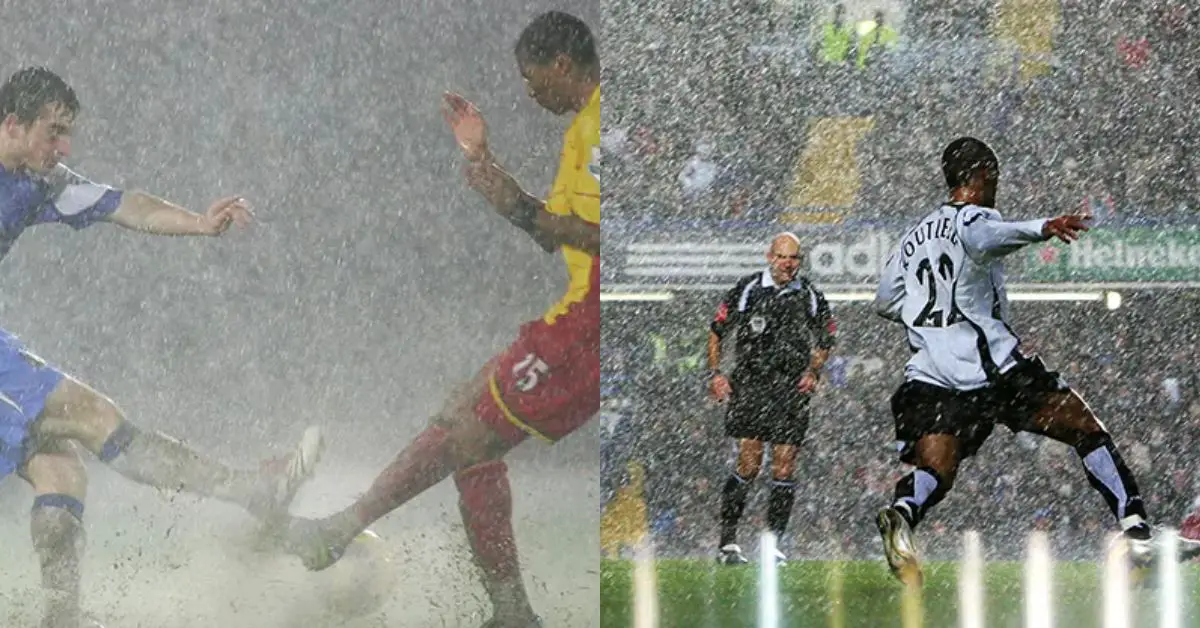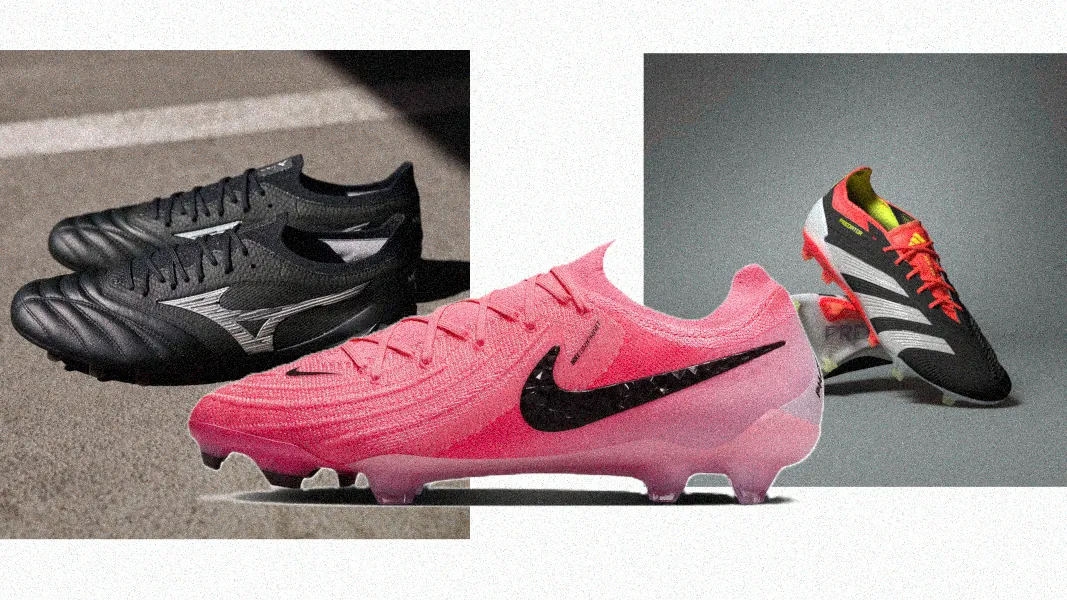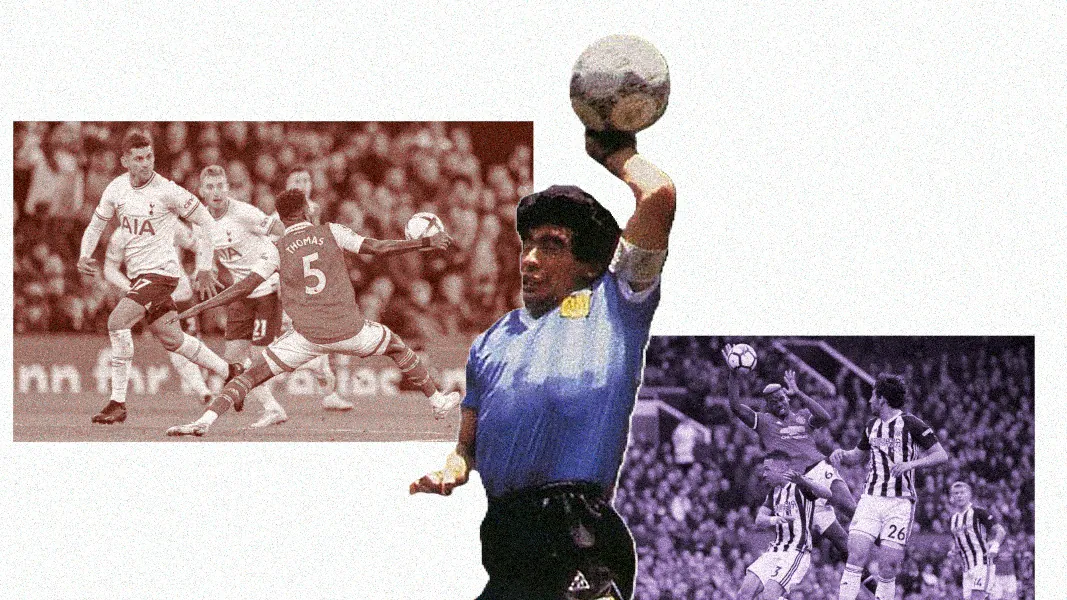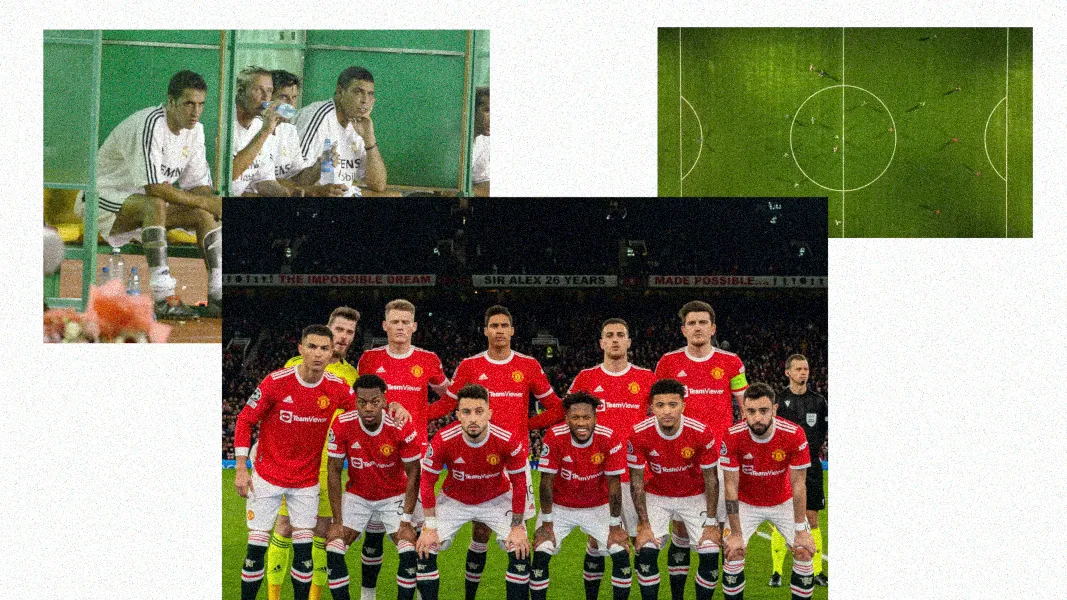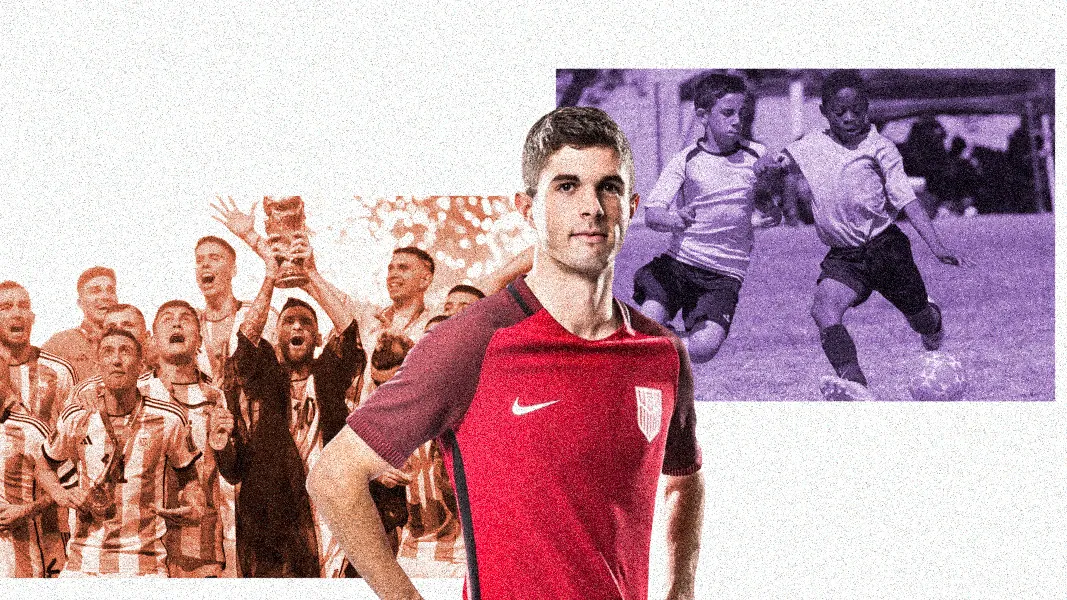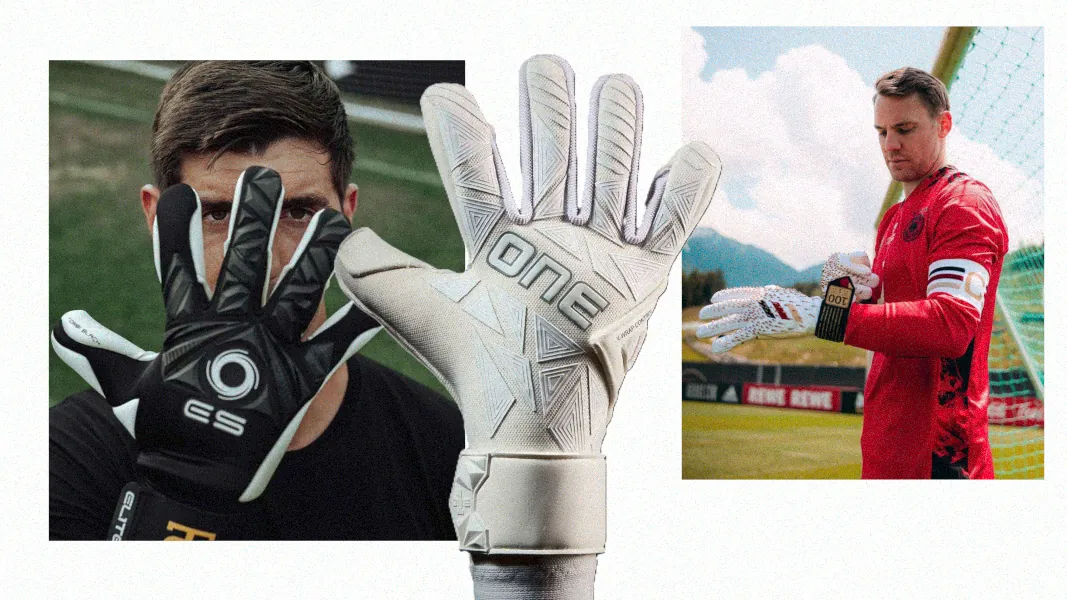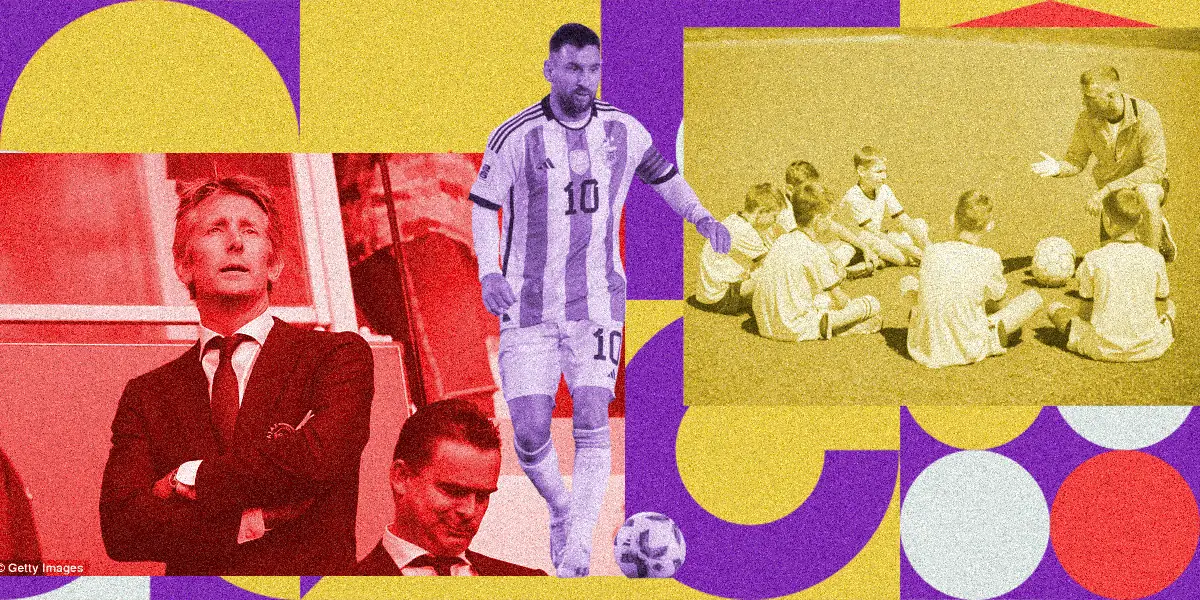Ever wondered if they play soccer in the rain? The answer is pretty straightforward.
Yes, soccer is often played in the rain. Despite the challenges posed by wet conditions, players and teams adapt their strategies to the weather. Rain can affect the field, ball movement, and player safety, but matches are frequently held in such conditions.
In this article, we delve into the world of soccer in the rain, exploring its impact on gameplay, safety measures, historical moments, and more.
Key Takeaways:
- Soccer is frequently played in the rain, testing players’ adaptability and skills.
- Rain affects visibility, ball movement, and gameplay dynamics.
- Players and referees must adjust techniques and positioning to navigate wet conditions.
- Safety precautions are crucial to prevent injuries caused by slippery surfaces.
- Sustainable practices can mitigate environmental impacts of wet-weather matches.
The Influence of Rain on Soccer Matches
Embed from Getty ImagesRain significantly impacts the playing surface of a soccer field. When it rains, the field becomes slippery and wet. This makes it challenging for players to maintain their balance and control over the ball.
The grass becomes softer, and the ball doesn’t roll as smoothly. As a result, players need to adjust their movements and techniques. The wet surface can also cause the ball to skid or bounce unpredictably, making passes and shots more difficult to execute accurately.
Safety Concerns for Soccer Players in Rain
Player safety becomes a crucial concern when playing soccer in the rain. The wet and slippery surface increases the risk of players slipping and falling, leading to potential injuries. This includes strains, sprains, and even more serious harm like ligament tears. The chance of collisions between players also rises due to reduced traction.
Adequate precautions, such as appropriate footwear and warm-up routines, are essential to mitigate these safety risks and ensure the well-being of all participants on the field.
How Rain Impacts Visibility for Players, Referees, and Spectators
Rain significantly affects visibility for players, referees, and spectators during soccer matches.
The precipitation, combined with factors like mist and water on eyewear, can hinder clear vision. Players might find it hard to see the ball and anticipate opponents’ actions accurately.
Referees might struggle to observe fouls and other infractions due to obscured vision.
For spectators, heavy rain can obstruct their view of the field, making it challenging to follow the game closely.
Historical Matches Played in Rainy Conditions
1. 2008 UCL Final (Manchester United vs. Chelsea)
Embed from Getty ImagesManchester United faced their English rivals Chelsea in a battle for the UEFA Champions League trophy. A heavy downpour in Moscow towards the end of the match saw John Terry (Chelsea) slipping and missing a crucial penalty. This would prove to be fatal as Manchester United went on to win the penalty shootouts and the trophy.
Watch the match highlights here!
2. 2007 UCL Semi-Final 2nd Leg (AC Milan vs. Manchester United)
Embed from Getty ImagesThe 2007 Champions League Semi-final, played in Milan, saw a heavy downpour of rain. The soccer match was written in history due to Kaka’s excellent performance in the match. AC Milan went on to win the UCL that year and Kaka would deservedly win the Ballon D’or.
Advantages and Disadvantages of Playing Soccer in the Rain
Advantages of Playing in the Rain
- Unpredictability and Adaptability: Rain introduces an element of unpredictability, testing players’ ability to adapt their strategies and techniques on the fly.
- Skill Showcase: Playing in wet conditions showcases players’ exceptional ball control, quick decision-making, and adaptability, highlighting their true skill level.
- Leveling the Playing Field: Weather-induced challenges can equalize the performance gap between teams, offering an opportunity for underdogs to shine.
- Physical Endurance: Rainy matches demand heightened physical effort and endurance from players, creating an environment for showcasing their fitness levels.
Disadvantages of Playing in the Rain
- Increased Injury Risk: The slippery surface increases the chances of players sustaining injuries due to slips, falls, and collisions.
- Altered Gameplay Dynamics: The wet pitch affects ball movement and player speed, leading to altered gameplay dynamics that can disrupt a team’s strategy.
- Reduced Precision: Passing, shooting, and controlling the ball become more challenging due to the unpredictable movements caused by waterlogged conditions.
- Visibility Issues: Both players and referees face visibility challenges, impacting gameplay and decision-making due to impaired sightlines.
- Quality of Play: The overall quality of play can suffer as technical skills may be compromised due to the adverse conditions.
Technical Adaptations for Rainy Matches
Embed from Getty ImagesTechnical adaptations are crucial when playing soccer in rainy conditions. Players make specific adjustments to their gameplay to navigate the challenges posed by wet surfaces:
- Adjusted Ball Control: Players adopt a softer touch and greater control when receiving and passing the ball, compensating for the slippery field.
- Passing Techniques: Short, precise passes become essential as longer passes might be difficult to execute accurately due to the unpredictable movement of the ball on a wet surface.
- Shooting Strategies: Players opt for more accurate shots instead of powerful ones, focusing on ball placement to counteract the unpredictable bounces.
- Dribbling Modifications: Dribbling close to the body and maintaining tighter control minimizes the risk of losing possession on a slick field.
- Change in Tactics: Teams may adjust their tactical approach by focusing on possession and shorter passes, adapting to the reduced predictability of ball movement.
- Footwear Selection: Players choose footwear with better traction, often opting for cleats designed for wet conditions to enhance grip on the slippery surface.
- Game Pace Management: Players adapt the pace of the game, opting for controlled build-up play to minimize mistakes and take advantage of gaps created by opponents’ slips.
Measures Taken to Prepare the Playing Field for Rainy Matches
Preparing a soccer field for rainy matches involves a series of essential measures to ensure optimal playing conditions despite the wet weather:
- Drainage Systems: Adequate drainage systems, including strategically placed pipes and channels, facilitate the efficient removal of excess water from the field.
- Grass Maintenance: Grass is cut slightly longer than usual to provide better traction for players, while regular mowing ensures the field remains playable.
- Aeration: Prior to rainy matches, the field is aerated to enhance water absorption and prevent surface water accumulation.
- Field Coverings: In the lead-up to the match, the field may be covered to shield it from excessive rain, preventing waterlogging and maintaining stability.
- Sand Application: Sand is applied strategically to key areas to bolster the field’s ability to absorb water, reducing the risk of puddles forming.
- Line Marking: Lines and markings on the field are retouched to ensure visibility during the match, even in rainy conditions.
- Goalmouth Protection: Specially designed goalmouth covers help shield the goal areas from excessive water accumulation, ensuring goalmouths remain playable.
- Turf Repair Kits: Available on the sidelines, these kits allow quick fixes for divots and damaged areas caused by player movement.
- Pitch Inspection: Regular inspections leading up to the match assess the field’s condition, allowing organizers to take further action if necessary.
Player Safety in Wet Conditions
Player safety in wet conditions holds paramount importance in soccer. The slippery and unpredictable surface increases the risk of slips, falls, and injuries.
- Proper footwear with sufficient traction is vital to prevent accidents.
- Adequate warm-up routines help muscles adjust to the conditions, reducing the likelihood of strains or pulls.
- Maintaining hydration levels remains crucial despite the rain, as dehydration can contribute to injuries.
- Instructors and coaches play a pivotal role in educating players about the right techniques to protect themselves on a wet field.
Difficulties Referees Face When Officiating Matches in the Rain
Embed from Getty ImagesOfficiating matches in the rain presents referees with distinct challenges.
- Reduced visibility due to rain and mist makes it challenging to observe player actions accurately.
- Tracking the ball’s movement becomes more difficult, affecting their ability to make accurate calls.
- Identifying fouls and infringements is complicated by players’ altered movements on the wet field.
- The condition of the ball can change rapidly due to water accumulation, impacting its trajectory and players’ interactions with it.
- Referees also face increased difficulty in maintaining their own balance and stability on the slippery surface.
To address the challenges posed by rainy conditions, referees can employ various solutions and strategies:
- Communication: Clear communication with assistant referees and fourth officials helps maintain consistency in decision-making despite reduced visibility.
- Positioning: Optimal positioning allows referees to have a better view of critical areas, enhancing their ability to make accurate judgments.
- Whistle Use: Frequent and distinct whistle blows aid in alerting players to stoppages and fouls, compensating for potential visual disruptions.
- Adapted Signals: Referees can use more pronounced and deliberate hand signals to ensure players comprehend their decisions clearly.
- Attire: Wearing appropriate, water-resistant attire can help referees stay dry and focused, minimizing the impact of adverse weather conditions.
Potential Environmental Implications of Playing Soccer in the Rain
- Field Impact: Rainy matches can cause increased wear and tear on the playing field, potentially leading to higher maintenance requirements and resource consumption.
- Water Usage: Rain may give the impression that less water is needed for the field, but excess water can also strain drainage systems and lead to water wastage.
- Carbon Footprint: Field maintenance activities such as mowing, aeration, and fertilization contribute to the carbon footprint, potentially impacting the environment.
- Waste Generation: Increased field maintenance might lead to higher waste generation from activities like grass clippings disposal.
- Energy Use: Additional lighting and facilities usage due to longer matches or rescheduling can lead to increased energy consumption.
That being said, several initiatives and practices can be promoted to ensure the environmental impact is negligible:
- Eco-Friendly Field Maintenance: Using organic fertilizers and minimizing pesticide use reduces environmental impact during field upkeep.
- Rainwater Harvesting: Collecting rainwater for field irrigation decreases water consumption and minimizes strain on local water sources.
- Energy-Efficient Lighting: Utilizing energy-efficient lighting for night matches reduces energy consumption and lowers carbon emissions.
- Erosion Control: Implementing erosion control measures like planting grass varieties with strong root systems helps prevent soil erosion.
- Green Infrastructure: Incorporating green infrastructure elements like permeable surfaces aids in natural water filtration and minimizes runoff.
- Scheduling Considerations: Thoughtful scheduling of matches during periods of lower rainfall reduces the need for excessive field maintenance.
- Community Education: Raising awareness among players, fans, and staff about sustainable practices encourages collective efforts.
FAQs About Playing Soccer in Rain
Generally, soccer games are not automatically cancelled due to rain. It depends on factors like field conditions and safety of players.
Yes, Major League Soccer (MLS) teams often play in the rain unless severe weather conditions pose safety risks.
Wear moisture-wicking clothing to stay dry, along with appropriate cleats for traction.
Severe weather like lightning, thunderstorms, or heavy flooding can lead to game cancellations due to safety concerns.
High school soccer players may play in the rain, but game cancellations can occur if conditions become unsafe.
Conclusion: Do They Play Soccer in the Rain?
In conclusion, it is common for soccer players to play in the rain. Playing soccer in the rain presents challenges that test players’ adaptability and skills. While rain alters the dynamics of the game and affects visibility, it also offers opportunities for unique moments and showcases the dedication of players.
If you found this article informative, I kindly ask you to consider sharing it with fellow soccer enthusiasts. Your support will help spread valuable insights and foster a deeper understanding of the game’s dynamics.
Thank you for being a part of our soccer community!
